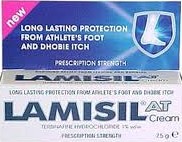Guarana Side Effects (Top 10)
Guarana is an herb belonging to the maple family. Guarana is used as a dietary supplement, which is twice as potent as coffee in yielding stimulation. However, since guarana also contains twice the amount of caffeine in coffee, it also produces guarana side effects related to this high caffeine content.

The guarana plant has a lot of uses. The most commonly used part is the fruit, which is like the coffee bean. The seeds of the fruit are pounded into powder to make a tea. Food supplements containing guarana also use the seeds to benefit from its uses. Guarana contains various components such as adenine, choline, fat, guanine, protein, starch, saponin, theophylline, theobromine, xanthine and the most popular is caffeine. Guarana is considered Generally Recognized as Safe (GRAS) by the Food and Drug Administration of the United States.
Guarana is used as a sweetener for carbonated soft drinks, energy drinks and a major ingredient for herbal teas. Other medical uses of guarana include:
- CNS stimulant to increase alertness, mood and memory
- Weight loss remedy by increasing the body’s feeling of fullness
- Reduces platelet aggregation to prevent risk of ischemic stroke and heart attacks
- Increase blood pressure in hypotension
- Increase endurance to exercise
- Increase power and performance in chronic fatigue syndrome
- Reduces fluid retention through its diuretic effect
- Prevention of malaria and diarrhea through its antibacterial effect
Guarana Side effects
Along with its vast uses, it may also have various guarana side effects as a result of the various mechanism of action of the herb. Guarana side effects may include:
1. Insomnia
Since guarana contains high amounts of caffeine that act as a CNS stimulant, it may lead to insomnia when taken at night. In order to prevent this, be sure to take guarana containing products and supplements in the morning to prevent CNS stimulation at night.
2. Anxiety
People with anxiety disorders may have intensified feelings of anxiety when guarana is taken because of CNS stimulation.
3. Anorexia
One of the beneficial effects of guarana for those who want to lose weight is anorexia. This effect results from the action of guarana in inducing early satiety. In people taking guarana not for weight loss, anorexia may be an adverse guarana side effect.
4. Bleeding tendencies
Since guarana reduces platelet aggregation, there may be increased risk for bleeding. When taking guarana, make sure to watch out for signs of bleeding such as dark stools, nose bleeding and easy bruising. In this line, never take guarana products when under other blood thinning medications.
5. Tachycardia
Guarana contains theopylline, theobromine and other xanthine compounds that are potent cardiac stimulants. Because of this, the heart rate may increase leading to palpitations.
6. Hypertension
Due to its cardiac stimulant effect, guarana may also lead to increased blood pressure. This may be beneficial to those suffering from low blood pressure such as those experiencing antihypertensive medication side effects such as Atacand side effects. However, people who have hypertension should be alert for possible hypertensive crisis.
7. Glaucoma
The increased pressure in the blood vessels may also increase the pressure in the intraocular space leading to glaucoma. People with this eye condition should be cautious in order to prevent this guarana side effect.
8. Increased frequency of urination
The increased myocardial contraction increases the cardiac output and blood flow to the kidneys. As a result, there is increased urine production leading to diuresis.
9. Hypoglycemia
Caffeine may also reduce blood sugar levels. In patients having diabetes, it is important to monitor the blood sugar regularly in order to prevent severe hypoglycemia states especially when under insulin therapy.
10. Worsening of diarrhea
The caffeine in guarana may intensify diarrhea because of being an intestinal irritant. In addition, the diuresis may also worsen dehydration associated with diarrhea.
11. Osteoporosis
Caffeine flushes calcium in the kidneys. Because of too much caffeine contained in guarana, it may lead to osteoporosis as a serious guarana side effect. Osteoporosis may be prevented by taking less than 300 mg of caffeine per day only along with intake of calcium supplements.
Because of these various guarana side-effects, it is recommended to take guarana in minimal amounts. Also, never take guarana when you have other underlying conditions that may be worsened by guarana use.
